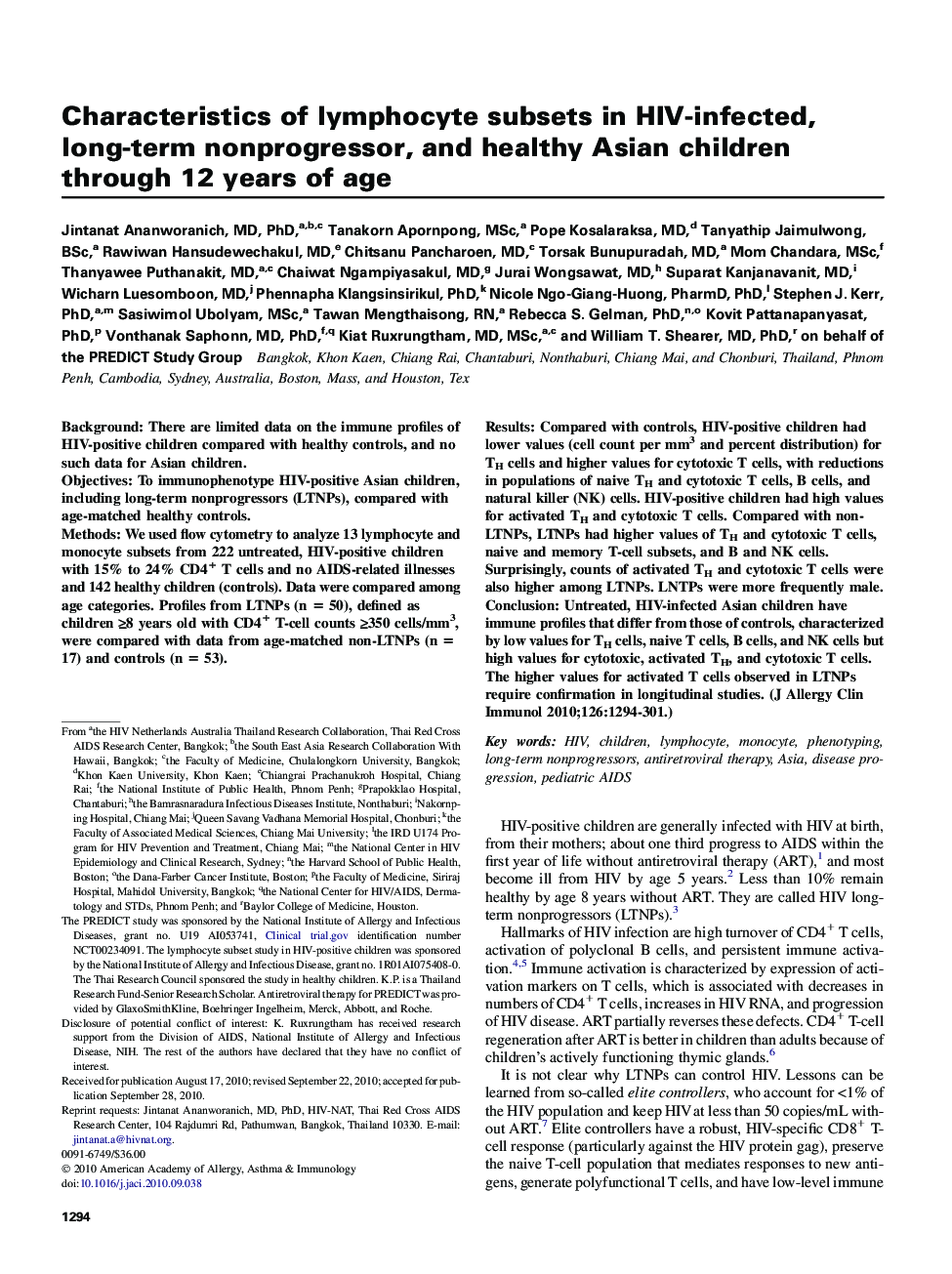| Article ID | Journal | Published Year | Pages | File Type |
|---|---|---|---|---|
| 6067483 | Journal of Allergy and Clinical Immunology | 2010 | 18 Pages |
BackgroundThere are limited data on the immune profiles of HIV-positive children compared with healthy controls, and no such data for Asian children.ObjectivesTo immunophenotype HIV-positive Asian children, including long-term nonprogressors (LTNPs), compared with age-matched healthy controls.MethodsWe used flow cytometry to analyze 13 lymphocyte and monocyte subsets from 222 untreated, HIV-positive children with 15% to 24% CD4+ T cells and no AIDS-related illnesses and 142 healthy children (controls). Data were compared among age categories. Profiles from LTNPs (n = 50), defined as children â¥8 years old with CD4+ T-cell counts â¥350 cells/mm3, were compared with data from age-matched non-LTNPs (n = 17) and controls (n = 53).ResultsCompared with controls, HIV-positive children had lower values (cell count per mm3 and percent distribution) for TH cells and higher values for cytotoxic T cells, with reductions in populations of naive TH and cytotoxic T cells, B cells, and natural killer (NK) cells. HIV-positive children had high values for activated TH and cytotoxic T cells. Compared with non-LTNPs, LTNPs had higher values of TH and cytotoxic T cells, naive and memory T-cell subsets, and B and NK cells. Surprisingly, counts of activated TH and cytotoxic T cells were also higher among LTNPs. LNTPs were more frequently male.ConclusionUntreated, HIV-infected Asian children have immune profiles that differ from those of controls, characterized by low values for TH cells, naive T cells, B cells, and NK cells but high values for cytotoxic, activated TH, and cytotoxic T cells. The higher values for activated T cells observed in LTNPs require confirmation in longitudinal studies.
